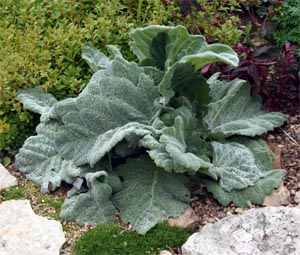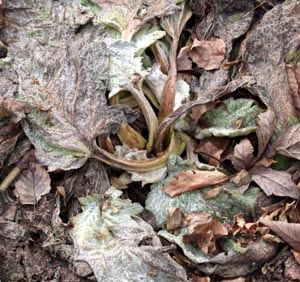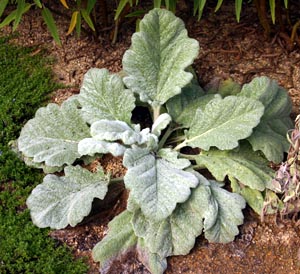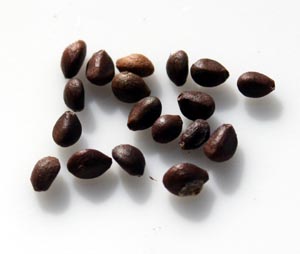
Silver sage, Salvia argentea, is just one of over 900 species of salvias. Unlike most in the group that are grown for their flowers, silver sage is generally prized for its eye-catching, furry silver leaves. Children and adults alike have a hard time resisting petting the soft, appealing foliage. This award-winning plant has been given the Royal Horticulture Society’s prestigious Award of Garden Merit.

Native to dry, stony grasslands of southern Europe, the eastern Mediterranean and northwest Africa, this plant is hardy in zones 5-9. It tends to be a short-lived perennial in dry areas and/or if the flowers are removed but is more typically a biennial in humid climates, especially if allowed to go to seed.
The plant grows a low basal clump or rosette of leaves up to three feet across. Leaves emerge crinkled but flatten as they grow, with the margins retaining a sinuous wave. The large, irregularly lobed oval leaves are densely covered with silver hairs that create a furry or wooly effect.

In the winter the plant dies back mostly to the ground, but it is best to leave the old leaves on the plant (even though this does not look very good) until new growth resumes the following spring. The large leaves seem to help shield the crown from excess moisture, keeping the soil around the base drier and helping winter survival.
Silver sage flowers in early to mid-summer after its first year. Although the two to three foot candelabra-like flower spikes can be dramatic, the conspicuous white or green bracts and small white or yellowish flowers are not particularly impressive. Developing flowers causes the foliage to deteriorate and weakens the plant. It is best to remove the flower spikes while they are still small and before they set seed (unless you wish to propagate the plants) to help the plant itself live longer.

Use silver sage as a specimen plant, an accent plant in the rock garden, or at the front of the dry sunny border. A grouping of these plants makes a stunning ground cover. Silver sage combines well with other drought tolerant plants, such as lavender, yarrow (Achillea) or Russian sage (Perovskia).

It is a nice complement for purple or magenta flowers and it looks gorgeous in a “white” garden.
Silver sage grows best in rich, well-drained soil in full sun to partial shade. Hairy-leaved plants and high humidity often do not go together. In the Midwest, good results require full sun and sharp drainage (naturally sandy soil or soil amended with gravel). These plants must have excellent drainage, especially in winter, in order to thrive. Protection from winter wet will help survival. Silver sage can also be grown in containers. Space new plants in the ground two to three feet apart.

Plants are easily grown from seed, and self-sown seedlings may result if plants are allowed to flower. Sow purchased or collected seed indoors in early spring for planting out after danger of frost has passed. Silver sage can also be propagated by removing side shoots with roots from older plants in the spring.
Aphids can occasionally be a problem, and in damp conditions slugs can devastate the leaves, but otherwise silver sage has few problems.
– Susan Mahr, University of Wisconsin – Madison
Latest from Wisconsin Yard & Garden
Ask Your Gardening Question
If you’re unable to find the information you need, please submit your gardening question here:





 Marigolds
Marigolds Create a Butterfly Garden
Create a Butterfly Garden Plant Flowers to Encourage Beneficial Insects
Plant Flowers to Encourage Beneficial Insects Forcing Bulbs
Forcing Bulbs


